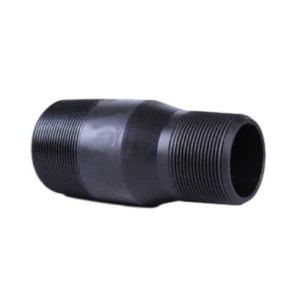- Afrikaans
- Albanian
- Amharic
- Arabic
- Armenian
- Azerbaijani
- Basque
- Belarusian
- Bengali
- Bosnian
- Bulgarian
- Catalan
- Cebuano
- Corsican
- Croatian
- Czech
- Danish
- Dutch
- English
- Esperanto
- Estonian
- Finnish
- French
- Frisian
- Galician
- Georgian
- German
- Greek
- Gujarati
- Haitian Creole
- hausa
- hawaiian
- Hebrew
- Hindi
- Miao
- Hungarian
- Icelandic
- igbo
- Indonesian
- irish
- Italian
- Japanese
- Javanese
- Kannada
- kazakh
- Khmer
- Rwandese
- Korean
- Kurdish
- Kyrgyz
- Lao
- Latin
- Latvian
- Lithuanian
- Luxembourgish
- Macedonian
- Malgashi
- Malay
- Malayalam
- Maltese
- Maori
- Marathi
- Mongolian
- Myanmar
- Nepali
- Norwegian
- Norwegian
- Occitan
- Pashto
- Persian
- Polish
- Portuguese
- Punjabi
- Romanian
- Russian
- Samoan
- Scottish Gaelic
- Serbian
- Sesotho
- Shona
- Sindhi
- Sinhala
- Slovak
- Slovenian
- Somali
- Spanish
- Sundanese
- Swahili
- Swedish
- Tagalog
- Tajik
- Tamil
- Tatar
- Telugu
- Thai
- Turkish
- Turkmen
- Ukrainian
- Urdu
- Uighur
- Uzbek
- Vietnamese
- Welsh
- Bantu
- Yiddish
- Yoruba
- Zulu
Optimizing Tubing Crossover Techniques for Enhanced Drilling Efficiency and Performance
Tubing Crossover Understanding the Concept and Its Applications in the Oil and Gas Industry
In the dynamic landscape of the oil and gas industry, the term tubing crossover refers to a crucial process associated with well drilling and production operations. As companies strive to maximize production efficiency and enhance recovery rates, understanding tubing crossover becomes increasingly significant. This article explores the concept of tubing crossover, its applications, and its importance in today’s energy sector.
What is Tubing Crossover?
Tubing crossover occurs in well systems where two different types of tubing are joined in a manner that allows for the efficient flow of fluids. More explicitly, it involves connecting smaller diameter tubing (often referred to as production tubing) to larger diameter casing or other types of tubing. This crossover plays a vital role in ensuring that the fluids extracted from the reservoir can adequately flow to the surface without restrictions, thereby preventing pressure build-up and optimizing overall production.
Types of Tubing Crossovers
There are several different types of tubing crossovers, each designed for specific applications and fluid types. The most common classifications include
1. Standard Crossovers These are typically used in conventional oil and gas wells where the production rates are steady and the fluid composition is relatively consistent.
2. Argos Crossovers These are designed specifically for high-pressure, high-temperature environments, offering greater strength and durability. Argos crossovers are essential in deepwater drilling operations where extreme conditions prevail.
3. Specialized Crossovers Certain applications may require custom solutions tailored to unique well conditions, including variations in temperature, pressure, and fluid type. These specialized crossovers often involve advanced materials and technologies to ensure reliability.
Importance of Tubing Crossover in Production
tubing crossover

The role of tubing crossover in enhancing oil and gas production cannot be overstated. Here are some of the key benefits
1. Improved Fluid Flow By efficiently connecting different tubing sections, crossovers facilitate optimal fluid movement from the reservoir to the surface. This ensures that well production remains steady and maximizes recovery rates.
2. Pressure Management Properly designed tubing crossover systems help manage pressure differentials within the well. This reduces the risk of blowouts or equipment failures and ensures safe operating conditions.
3. Flexibility and Adaptability Crossover solutions can be adapted to various drilling scenarios, enabling operators to customize their approach based on the geological and operational requirements of specific fields.
4. Enhanced Longevity of Equipment The right crossover design can mitigate wear and tear on tubing and casing, extending the lifespan of critical infrastructure and reducing maintenance costs.
5. Cost Efficiency Efficient fluid flow and reduced pressure build-up lead to overall cost savings in production. Operators can achieve higher outputs without necessitating significant capital expenses in new equipment.
Conclusion
As energy demands continue to rise, the efficiency and effectiveness of oil and gas production practices remain at the forefront of industry innovation. Tubing crossover is a fundamental aspect of this evolution, allowing for improved fluid dynamics, pressure management, and adaptability to challenging conditions. By investing in advanced crossover solutions, operators can optimize their well performance, extend equipment lifespan, and ultimately contribute to the sustainability of energy resources.
In summary, tubing crossover is not merely a technical term but a vital component that underpins the productivity of the oil and gas sector. Understanding its principles and applications significantly impacts the decision-making processes of operators and engineers alike, paving the way for greater efficiencies and advancements in hydrocarbon extraction methods. As the industry continues to evolve, innovations in tubing crossover technology will likely play a critical role in shaping the future of energy production.
-
Tubing Pup Joints: Essential Components for Oil and Gas OperationsNewsJul.10,2025
-
Pup Joints: Essential Components for Reliable Drilling OperationsNewsJul.10,2025
-
Pipe Couplings: Connecting Your World EfficientlyNewsJul.10,2025
-
Mastering Oilfield Operations with Quality Tubing and CasingNewsJul.10,2025
-
High-Quality Casing Couplings for Every NeedNewsJul.10,2025
-
Boost Your Drilling Efficiency with Premium Crossover Tools & Seating NipplesNewsJul.10,2025







